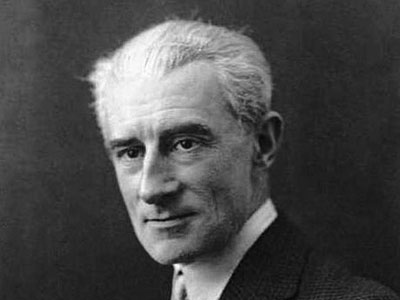
Maurice Ravel
(born Ciborne, Basses Pyrénées 7 March 1875; died Paris 28 December 1937)
Ravel's Musical Style
Ravel established his musical style early on in his career and though he suffered in comparison with Debussy, whose opera Pelléas and Mélisande he much admired, the resemblances between them are largely superficial. Ravel’s interest in bitonality (writing in two keys simultaneously), jazz and other popular music are heard to advantage in L’enfant et les sortiléges, as is reputation for a brilliant orchestrator with a real feeling for colour and timbre.
Ravel's Life
Although the French composer and pianist Maurice Ravel was born in south-west France in the Basque country close to the Spanish border, his family moved to Paris when he was 3 months old, and it was in the French capital that he grew up, studied and lived until 1921. In that year he purchased a property in a village some 30 miles outside Paris, and though he returned frequently to the city it was in Montfort-l’Amaury that he wrote many of his most famous works, including both piano concertos and the fantasy opera, L’enfant et les sortilèges.
He studied piano and composition at the Paris Conservatoire, including an important spell in Fauré’s class, and made a name for himself with piano works such as Jeux d’eau and Miroirs, and his String Quartet. Among his earliest projects as a student was the opera Shéhérazade, of which only the overture survives, and Olympia, an incomplete opera based on E. T. A. Hoffmann’s The Sandman. Ravel’s first completed opera is the 1-act comedy L’heure espagnole (1907–9). While he capitalised on the contemporary fashion for ballet, largely promoted by Diaghilev’s Ballets Russes, in works such as Daphnis and Chloe and Boléro (surely his most single famous piece), he completed his opera L’enfant et les sortilèges to a libretto commissioned from the writer Colette in 1925, after some five years’ work. Ravel was ever a slow and painstaking worker.
By 1931 and the composition of his brilliant G major Piano Concerto, Ravel was showing early signs of the brain illness that prevented him composing for his final four years. Following surgery in an attempt to rectify his condition, he died in 1937, aged 62. Among his final projects were plans for an opera entitled Jeanne d’Arc.
Notable Operas
- L’heure espagnole, opera in 1 act (1907–9)
- L’enfant et les sortilèges, opera in 1 act (1920–5)
Outside of opera:
- Daphnis and Chloe, ballet (1912)
- Boléro, ballet (1928)
- Piano Concerto in G major (1931)
